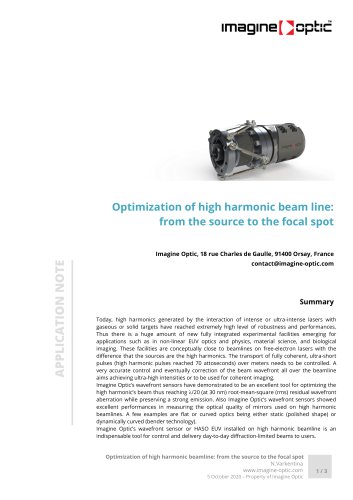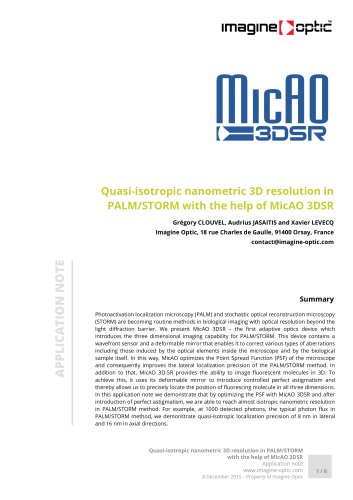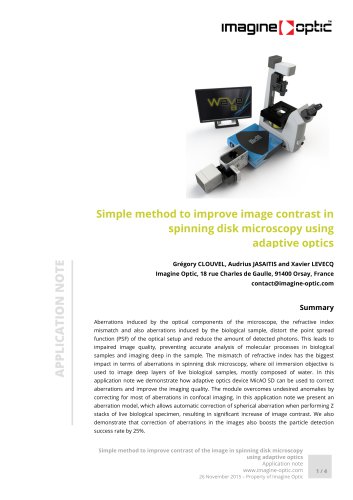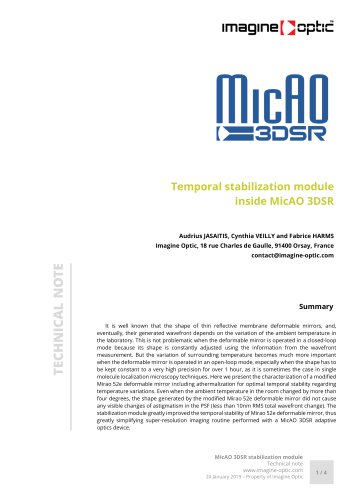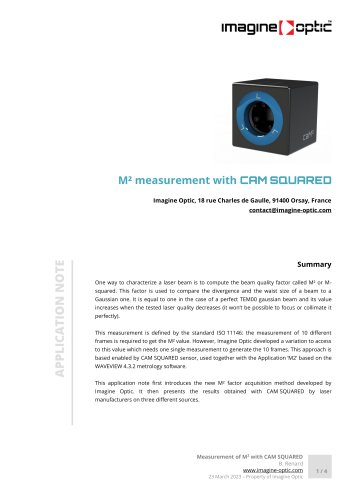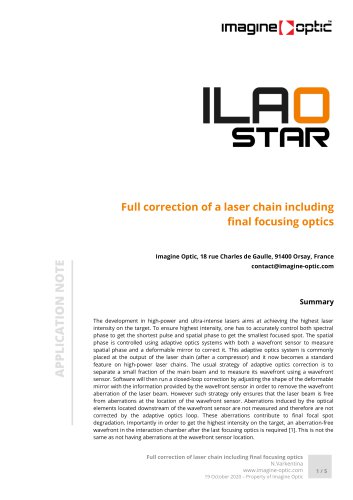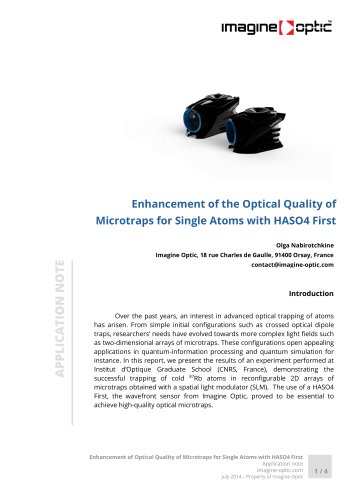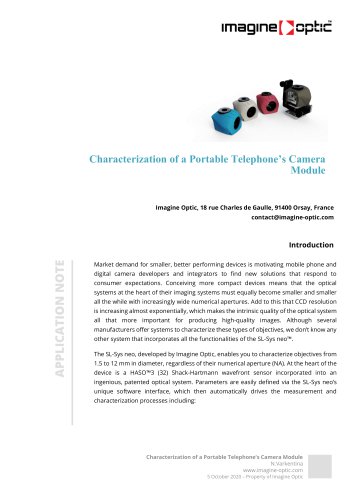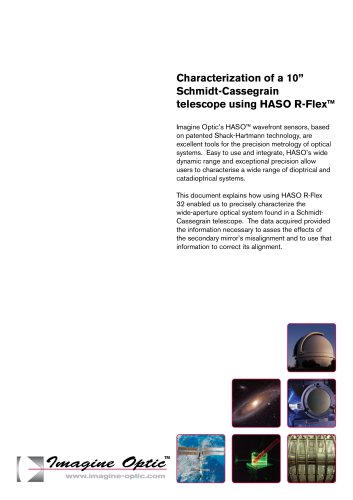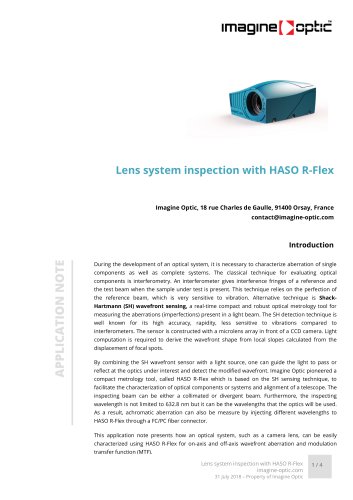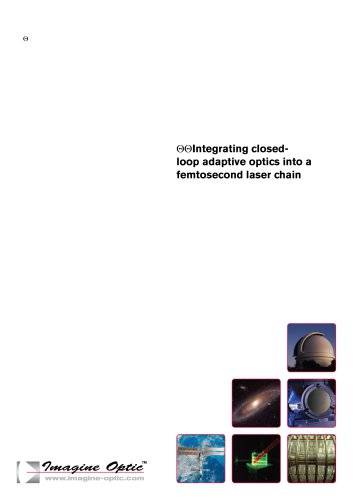
Catalog excerpts

Absolute measurement − Why is it important and how do you know if your wavefront sensor is really capable? A lot of wavefront sensor manufacturers claim that their devices are capable of absolute measurement. In order to best help you understand what this means, the best place to start is with a straightforward definition of the words that comprise that term. The Merriam Webster® dictionary defines absolute (in this case) as “free from imperfection or fault” and measure as “an adequate, given or fitting amount or degree; commensurate or due to proportion.” Even though these definitions may seem somewhat oxymoronic, when we put them into the context of wavefront analysis, we can provide a reasonably accurate definition by saying “the ability to provide the most accurate, quantitative and objective data possible on the optical qualities of a light source without relying on a similar external reference in order to establish a proportional relationship.” The importance of absolute measurement versus relative measurement depends of course on your application. At Imagine Optic, we believe that any application is best served by the ability to perform absolute measurement, even if the final result is based on relative measurement. Why? Because it provides an objective point of reference for decision making.
Open the catalog to page 1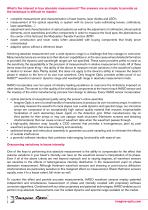
What’s the interest in true absolute measurement? The answers are as simple to provide as the technique is difficult to master: • complete measurement and characterization of laser beams, laser diodes and LED’s • measurement of the optical assembly or system with its source (auto-collimating lenses, collimators, laser assemblies…) • adjustment and characterization of optical systems as well as the adjustment of collimators, afocal optical elements, zoom assemblies and other components in order to measure the focal spot, the aberrations at the center of the field and the Modulation Transfer...
Open the catalog to page 2
How do you know if your sensor really performs absolute measurement? As the title of this technology note indicates, we’re going to show you how to test for yourself the performance of your wavefront sensor. The procedure is actually quite simple and requires little time or preparation. 1) Place an intermittent source on a translation stage orthogonally in front of your sensor (within any range close enough for the wavefront to be measured) and set your sensor to measure in absolute mode 1) Ideally, the source is a mono-mode, fibered laser or laser diode. In this case, the generated...
Open the catalog to page 3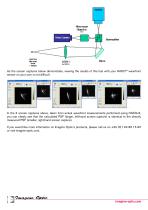
As the screen captures below demonstrate, viewing the results of this test with your HASO™ wavefront sensor on your own is not difficult. In the 3 screen captures above, taken from actual wavefront measurements performed using HAS0v3, you can clearly see that the calculated PSF (larger, left-hand screen capture) is identical to the directly measured PSF (smaller, right-hand screen capture). If you would like more information on Imagine Optic's products, please call us on +33 (0)1 64 86 15 60
Open the catalog to page 4All Imagine Optic catalogs and technical brochures
-
WAVE Suite
3 Pages
Archived catalogs
-
Microtraps
4 Pages
-
AO inside laser chain
5 Pages
-
AO in femtosecond laser
5 Pages
-
Large deformable mirror ILAO
6 Pages
-
NIR optics characterization
6 Pages
-
Telescope characterization
3 Pages
-
HASO R.FLEX
4 Pages
-
HASO3
2 Pages
-
bendAO?
3 Pages
-
HASO?3 WSR Wavefront Sensors
2 Pages
-
HASO R-Flex
3 Pages
-
SL-Sys LIQUID
2 Pages
-
SL-Sys neo
2 Pages
-
HASO™3 Wavefront Sensors
3 Pages


